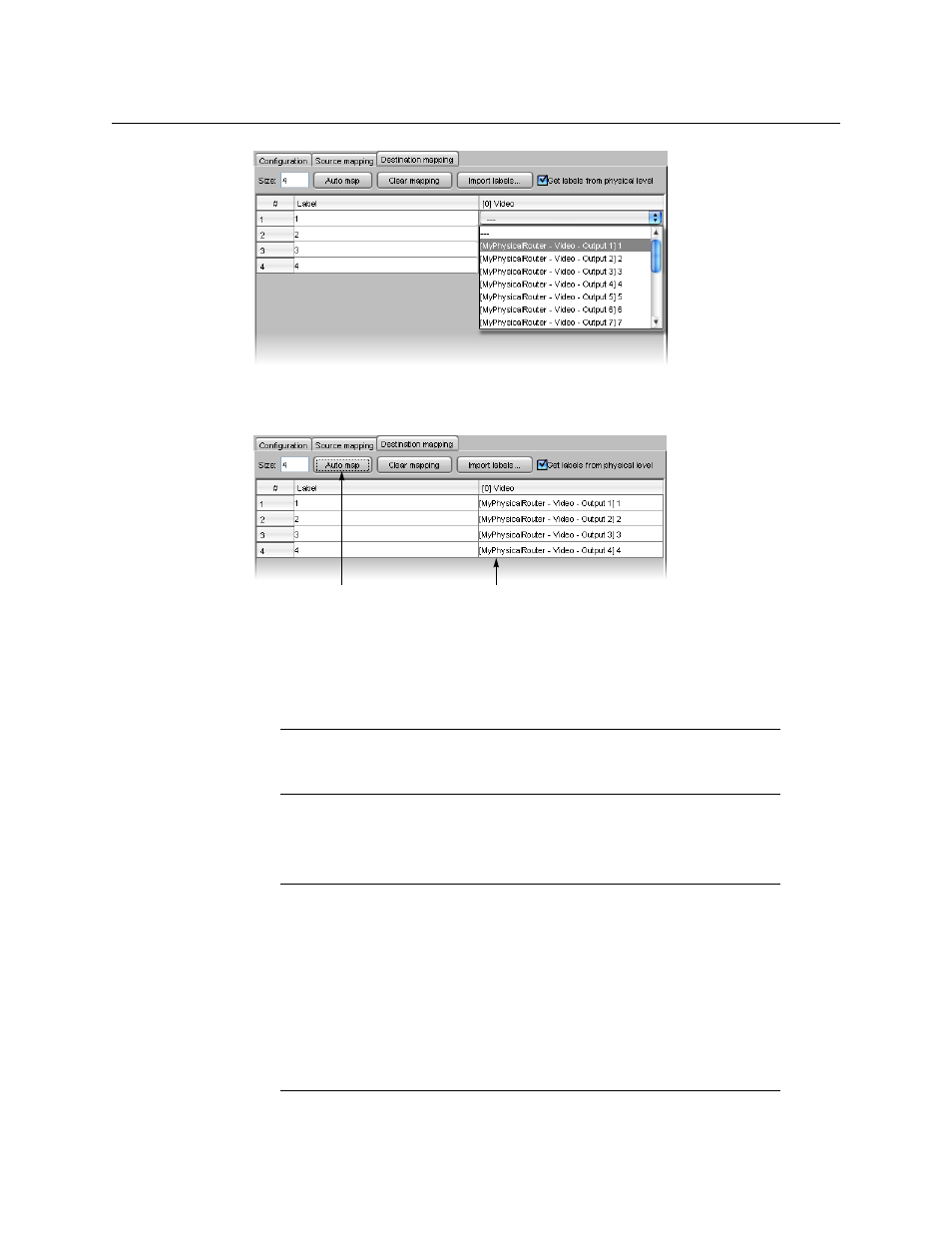Grass Valley Kaleido-X v.7.80 User Manual
Page 384

376
Routers & Kaleido-X
Configuring an External Router
9 Choose a physical output for this logical destination, and then proceed in the same
fashion for the other destinations, or click Auto map to automatically enter physical
outputs, in sequential order, starting from the first one in the list.
• If you have already specified a physical output, the sequence starts from that one,
then autofills from there.
• If the one you specified is in a row part way down the table, auto-mapping fills in
the rows below, then continues the sequence starting at the top of the table.
This feature is particularly useful when mapping a large number of destinations.
10 To import labels from a CSV file (i.e. a comma-delimited file such as might be exported
from an Excel spreadsheet), click Import labels, navigate to the CSV file that contains
the labels you wish to import, select it, and then click Open.
Note:
If you make a mistake, click Clear mapping, and then click Yes in the
confirmation message that appears to delete the entries in the physical
output column of the table. This does not affect the Labels column.
Note:
The file must be formatted as three columns with no heading row.
Column 1 should contain numbers from 1 to N (the number of sources),
column 2 should contain the source labels, and column 3 should contain the
destination labels. Columns are delimited by commas, without spaces.
Sample label file:
1,VTR 1,OUT 1
2,VTR 2,OUT 2
3,CAM 1,OUT 3
4,CAM 2,OUT 4
5,SAT 1,PGM
6,SAT 2,PVW
Auto map button Physical outputs are automatically populated
